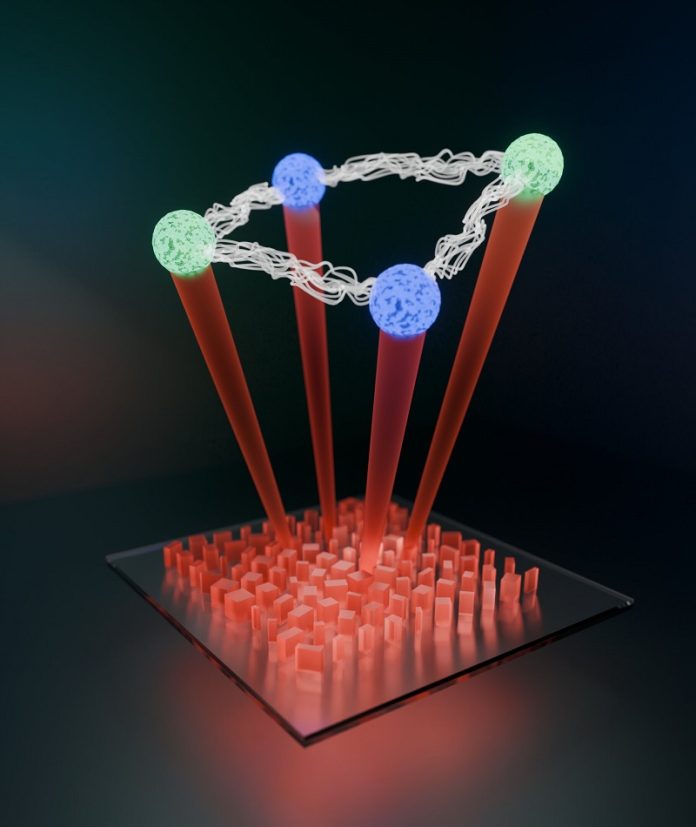
Photons—the tiny particles that make up light—are emerging as powerful tools for the next generation of quantum computers and communication networks.
They can carry information quickly, operate at room temperature, and be used to create entangled states, a key feature of quantum systems that allows multiple particles to share information instantly, no matter how far apart they are.
Until now, creating and controlling entangled photons has required complicated setups made of lenses, mirrors, beam splitters, and bulky chips filled with optical components.
These systems are often fragile and difficult to scale up, limiting how practical they can be for real-world quantum computing.
But a team of researchers at Harvard’s School of Engineering and Applied Sciences has found a way to dramatically simplify things—by flattening them.
Led by Professor Federico Capasso, the team developed special “metasurfaces”—ultra-thin devices made from tiny, precisely engineered patterns that manipulate light at the nanoscale.
These metasurfaces are able to perform the same quantum operations as large, complex optical setups, but on a flat, stable surface that’s easier to build, cheaper to produce, and much smaller in size.
In a new study published in Science, the researchers showed that metasurfaces can create and control complex entangled states of photons, paving the way for more compact and scalable quantum devices.
First author and graduate student Kerolos Yousef explained, “We’ve taken what would normally require an entire table full of equipment and miniaturized it onto a single surface.”
This innovation solves one of the biggest problems in optical quantum computing: scalability. Conventional systems need lots of perfectly aligned parts to work correctly, and the more complex the quantum operation, the more components are needed.
But metasurfaces are flat, durable, and require far fewer parts. They’re also resistant to errors and easier to manufacture, which makes them ideal candidates for future quantum chips and portable quantum devices.
To make this breakthrough possible, the team faced a challenge. As more photons are used in a quantum system, the number of ways they can interfere with each other multiplies quickly. This complexity is difficult to handle with traditional design methods.
To tackle it, the researchers turned to graph theory—a branch of mathematics that uses diagrams of dots and lines to map relationships. By representing entangled photon states as connected graphs, the team could better predict and design how photons would behave when interacting with the metasurface.
This approach brought new clarity to both the behavior of quantum light and the design of the metasurfaces themselves. The collaboration with the lab of Marko Loncar, experts in integrated photonics, provided essential tools and expertise to make it all work.
“This is exciting because it opens a practical path to scaling up optical quantum technologies,” said research scientist Neal Sinclair. “The graph theory method links the design of the metasurface directly to the behavior of the quantum light, making them two sides of the same coin.”
With this research, metasurfaces may soon become central components in quantum computing, sensing, and communication systems—bringing us closer to powerful new technologies that were once only theoretical.



